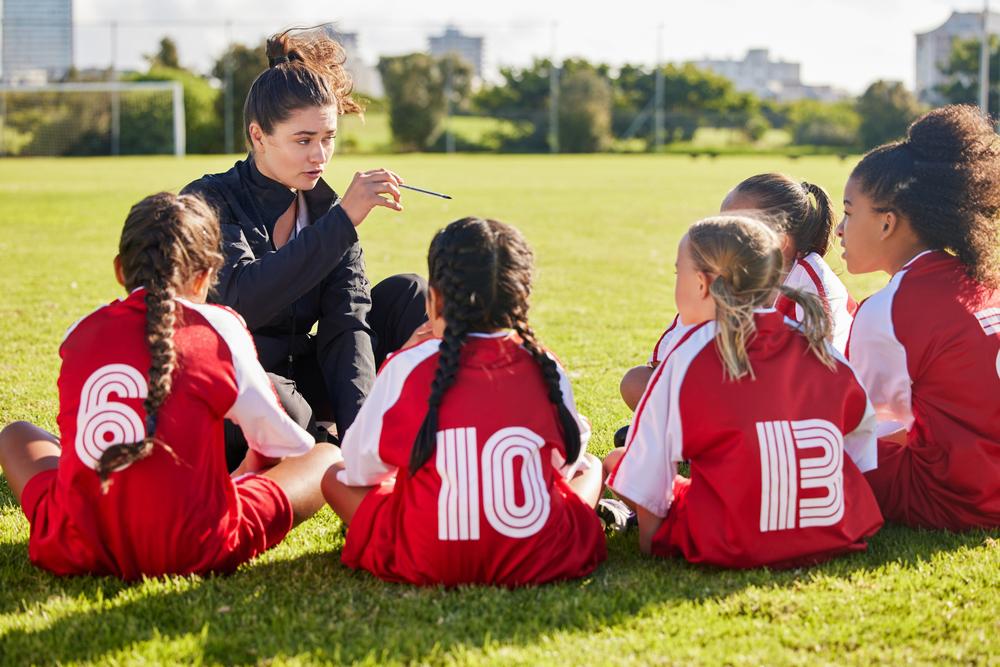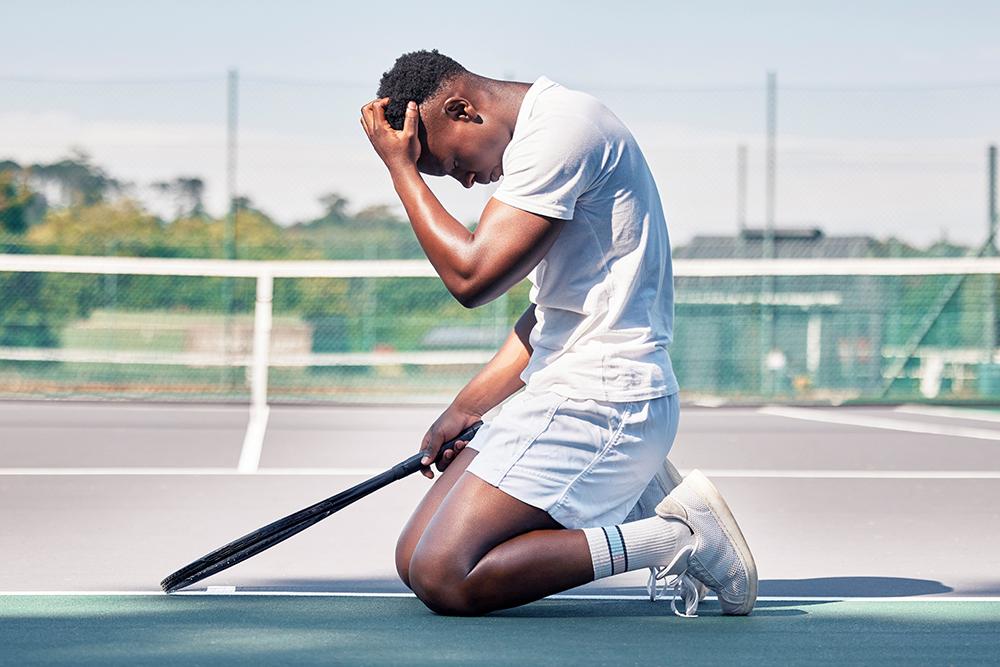 As a coach, helping athletes learn how to handle adversity is essential, both for their own growth and the success of the team. And change is often equivalent to adversity, especially for young athletes.
As a coach, helping athletes learn how to handle adversity is essential, both for their own growth and the success of the team. And change is often equivalent to adversity, especially for young athletes.
Here, board-certified family physician and TrueSport Expert, Deborah Gilboa, MD, explains exactly how change impacts athletes and shares ways that coaches can help athletes navigate change.
Understand the brain’s response to change
It’s important to understand what’s happening to an athlete’s brain when confronted with any change, whether good or bad. “Our brains have thousands of functions but only one job,” says Gilboa. “That job is to keep us alive. We are currently alive, so any kind of change is a threat to that. Picture a car’s seatbelt: When you’re driving and you hit the brakes, your seatbelt locks. It doesn’t matter if you’re avoiding a big accident or avoiding a plastic bag blowing in the road or reaching in the backseat to get something. It’s not a decision. It’s just a safety mechanism. Our brains are the same way.”
Making a team or being promoted to team captain is typically considered a positive change, but because it is still a change, it’s likely an athlete will experience stress. They may wonder if they’re up to the challenge, if their teammates will be jealous, or if everyone really believes that they can rise to the occasion.
The adolescent brain is still developing and has less experience with change, so while a change may seem minor to you as the coach, your athletes may struggle with that same small shift in the competition schedule or starting lineup. And athletes don’t just exist on the playing field: Changes in the rest of their lives can also have a major impact on their ability to perform.
But the good news is that a child reacting negatively to change is a positive thing. “All that means is that their brain is healthy,” says Gilboa. “We just see these reactions more often in kids than adults because adults have mostly learned to navigate things on the inside.”
Communicate clearly
Almost every facet of coaching can be improved by establishing clear lines of communication, and that’s especially true around change.
You can make change less traumatic by letting athletes (and parents) know exactly what’s coming and how announcements will be made. For example, if you occasionally text the starting lineup, but sometimes email it or post it on the bulletin board, your mixed method of communication can cause athletes to feel anxiety before the lineup is even posted. Instead, your starting lineup should always come out at the same time in the same style.
Check in on athletes going through change
Whether an athlete is sidelined with an injury or you just promoted them to a leadership role on the team, it’s important to check in. “As the coach, you don’t need to present the change as positive or negative, or offer solutions,” says Gilboa. “Start with simply saying, ‘This is a big change. How are you doing?'”
Often, coaches shy away from these conversations because they don’t want to deal with the potential emotions that might come up, or they just don’t realize that a change is actually impacting the athlete. Especially when the change is positive—like a promotion to team captain—it’s easy to assume that the athlete is thrilled and that there are no issues.
Remember that it’s not about you
“As a society, we tend to buy into the narrative that if a kid is stressed, we are doing a bad job,” says Gilboa. “And whether it’s the athletes themselves or their parents who are pushing back against a change you’ve made, we tend to think that the pushback is a referendum on our leadership, or we see it as a referendum on our character.'”
But Gilboa explains that a negative response to change is not a referendum, it is a reflex. The problems begin when a coach takes a situation personally, rather than acknowledging that change is hard and trying to help athletes navigate it. If you find that you’re getting pushback often, she recommends surveying your athletes to find out what’s causing the issue. You may not be communicating with them as effectively as you thought, or there might be another way for you to share information.
Build in rest days
If you’ve recently made major changes to the team, like a change in leadership or a round of cuts, your athletes may need a mental break as much as they need physical recovery time. “Recovery from change helps resilience get stronger,” Gilboa says. “This means protecting your athletes by not making any changes for a certain amount of time after a big change. For example, if you just announced a big schedule change and new starting lineup, let them know that there will be no new announcements or updates for the rest of the week, barring emergencies”
You can also ask athletes to take mental rest days on their physical rest days. That means taking a break from any strenuous mental work if possible and avoiding any big decisions or life changes. Gilboa also often reminds coaches and parents that teens need more hours of sleep than adults do—ideally 8 to 10 hours per night—and that young athletes are actually better able to bank sleep by sleeping late on weekends compared to adults.
Acknowledge and celebrate resilience
While we’re discussing ways to lower the stress athletes feel due to change, it’s important that as a coach, you don’t try to remove all change to avoid stressful situations. In short, as Gilboa says, “All change is stressful, but not all stress is bad.” Young athletes need those small doses of stress and change to develop the ability to cope. Change is part of life and sport is a great testing ground to develop resilience!
Use moments of change and stress as teaching opportunities, says Gilboa. Compare the way that athletes have handled different but similar struggles in the past and help them make connections.
Ask a question
 If you’re dealing with an athlete who’s stressed about a change, Gilboa says that the simplest way to help them is to stop the stress response in its tracks by asking a question that requires logical thinking. “When the brain is stressed out, the amygdala—which causes our flight or fight response—is lit up,” she explains. “But when you’re answering a question, your prefrontal cortex has to come online. Both of these parts of the brain can’t be fully engaged at the same time, so as soon as your prefrontal cortex engages, it calms the brain down.”
If you’re dealing with an athlete who’s stressed about a change, Gilboa says that the simplest way to help them is to stop the stress response in its tracks by asking a question that requires logical thinking. “When the brain is stressed out, the amygdala—which causes our flight or fight response—is lit up,” she explains. “But when you’re answering a question, your prefrontal cortex has to come online. Both of these parts of the brain can’t be fully engaged at the same time, so as soon as your prefrontal cortex engages, it calms the brain down.”
The question you ask doesn’t have to relate to the reason for the stress; it can be as simple as asking them if they want a drink of water. “Once you’ve asked a question and they’ve answered, they’re able to decrease the stress chemicals that have flooded the brain,” Gilboa adds.
Return to or establish routines
Last winter, Gilboa saw coaches, students, and parents in Los Angeles struggle as wildfires wreaked havoc not just on homes and businesses, but on routines and schedules for student-athletes. The COVID pandemic had similar effects. In both situations, Gilboa urged coaches to help athletes find some kind of new routine based on what they were familiar with.
During the pandemic, this may have looked like virtual workouts, and during the fires, some practices were relocated or moved indoors. Instead of allowing routines to be abandoned entirely during times of extreme change and shake-up, it’s critical to help athletes find some semblance of routine. Their brains are struggling to find safety in these times of change, and any way to help them feel like they’ve returned to the status quo will be helpful.
______________________________
Takeaway
When an athlete experiences any type of change, their brains will automatically go into stress mode. Understanding this can help a coach make better decisions, from how you structure team announcements to how you intervene in moments of alarm. Helping athletes develop resilience—the ability to bounce back from setbacks—is a key part of your role as a coach, and one primary way that athletes learn resilience is by moving through change and recovering from it.



